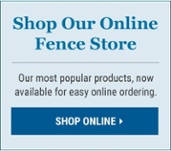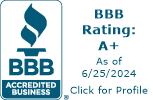Have you ever been to Malibu? Well, if you have, I bet you didn’t go to find photo ops with fences!
A Day of Adventure
Last spring, I drove around Malibu with a photographer friend and her assistant in search of fences similar to the ones we sell. It was a beautiful day with clear skies and a gentle breeze, making it the perfect day for an adventure. The views were stunning as we drove along the scenic coastline—no wonder the Hollywood elite buy property here.
After some searching, we finally came across a fence that closely resembled the high-quality fencing we provide. I couldn't contain my excitement and decided to jump out of the car to have my picture taken with it. We then turned down around the beach to look for sand erosion fencing. As my friend drove, I peered from side to side, looking for the fence. Ahoy! There it was—sand erosion fencing just like we sell. Woohoo!
Check out our Sand and Beach Preservation Fence
A Memorable Moment
Now for the exciting part. The photographer wanted me to change outfits! There was little room to change in her car because of the camera equipment, so they held up some of the light reflector diffusers, and I changed in the beach parking lot between the car door and the gold reflector. Are you ready for the funny part?
The fence section was only about seven feet long, hardly enough to make it work in a picture. But my brilliant photographer got some great shots! My friends and I had such a good laugh about our adventure, and it turned into a memorable moment that I will cherish.
A Perfect Ending
To end the day, we decided to treat ourselves to delicious seafood at a local fish joint. They served the most fabulous Pacific red snapper I've ever tasted, and their French fries were simply the best. It was the perfect way to end our day of exploration and laughter.
Finding Joy in Our Work
This story reminds me that finding fun and laughter in our work is essential to joy and satisfaction. We have fun providing high-quality fencing solutions; our commitment to excellence is as strong as ever. Like that fence in Malibu Beach, we strive to stand out and offer the best to our customers.
Thank you for your continued support and for choosing us as your trusted fencing provider. We look forward to serving you in the future and creating more memorable moments together.
Please contact me, share your stories, share pictures, and let me know what project you are dreaming about or working on. My team is always here to help.
Warmest regards,
Debbie Page
CEO, Louis E. Page Inc – Woman-owned business and Family-owned since 1893. (So 130 years ago our family ancestor Louis E. founded the company)

.jpg?width=459&height=459&name=unnamed%20(18).jpg)


.jpg?width=459&height=459&name=unnamed%20(15).jpg)
.jpg?width=459&height=459&name=unnamed%20(13).jpg)
.jpg?width=459&height=459&name=unnamed%20(11).jpg)
.jpg?width=512&height=512&name=unnamed%20(10).jpg) A Flat Twist on Fencing in My Own Garden
A Flat Twist on Fencing in My Own Garden



